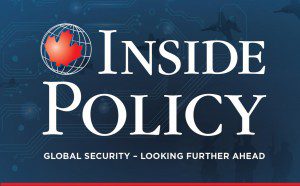 The Russian approach to hybrid warfare, which was applied successfully in Ukraine, was first tested in its 2008 conflict with Georgia, writes Michael Lambert. The Caucasus was a laboratory for such hybrid approaches, and remains a diplomatic testing ground for the Kremlin.
The Russian approach to hybrid warfare, which was applied successfully in Ukraine, was first tested in its 2008 conflict with Georgia, writes Michael Lambert. The Caucasus was a laboratory for such hybrid approaches, and remains a diplomatic testing ground for the Kremlin.
By Michael Lambert, May 16, 2017
Russia’s return to the international scene is a recent phenomenon, evidenced by its annexation of the Crimea in 2014, emergence of the conflict in the Donbass in 2015, and intervention in Syria shortly thereafter. Prior to this period, the influence of Moscow with its “near abroad” seemed completely different, even endangered with the successive enlargements of NATO and of the European Union in post-Soviet space in 2004 and 2007, and on the other hand, the launch in 2009 of the Eastern partnership – an economic initiative that impinges directly on the Kremlin’s “sphere of influence” in this area.
If Russian influence in its near abroad seems alive and well today, it is largely thanks to its new strategy that combines military and diplomatic approaches, which can be used to cleverly circumvent the application of Article 5 of the Washington Treaty. However, much less is known about the origins of this form of “hybrid warfare.” In fact, it actually dates back to the conflict between Russia and Georgia in 2008, where the Kremlin was able to experiment with elements of hybrid warfare and learned basic lessons later applied in Ukraine.
Strategically, the 2008 Georgia conflict took place at a time of declining Russian influence and military power within Eastern Europe, including the Caucasus, which was cut off geographically from the rest of Europe by the Black Sea. At this time, the Kremlin faced two main threats – NATO and the EU. The first is military, in that member states of NATO gain the benefit of Article 5 of the Washington Treaty in the event of conflict, which can include immediate response from allies, including several nuclear powers such as the United States, Great Britain, and France. Facing such a threat, Russia would then assuredly renounce any possible military intervention.
Even with its limited military power, the Kremlin began to see opportunities in the weaknesses and internal divisions within NATO member states.
To the leaders in Moscow, however, there was a flaw in the underlying reasoning behind NATO. For one, Article 5 cannot be invoked unless an “aggressor” is legally identified, which means that a civil war in a member country of NATO would not qualify for an Article 5 intervention. Even with its limited military power, the Kremlin began to see opportunities in the weaknesses and internal divisions within NATO member states, which in turn opened up the possibility for a less costly, more subtle approach to counter the Alliance.
The second threat is embodied by the EU’s Eastern partnership initiative. Launched in 2009, this program allows the EU to finance projects that favour the promotion of European values in countries that are not yet members, such as Ukraine and Georgia. This non-military influence turns out to be problematic for Moscow because it weakens Russia in its historic near abroad, which has traditionally served as a buffer between it and the Western world. If funding to Eastern Europe posed a problem, the prospect of a third major expansion to the East – that is to say Moldova, Ukraine, and Georgia – was seen as unacceptable. According to Moscow, that would mean the loss of control of the Black Sea, the presence of a European outpost in the Caucasus, and the possibly access to Azerbaijan’s hydrocarbons for the EU.
In the face of these two threats, Russian leaders moved quickly to develop a response. When it comes to NATO, it showed a strong interest in exploiting the legal Article 5 loophole that required identifying a perpetrator. It did so by accentuating the development of cyber-war and raising the possibility of civil war in NATO members, for example, by using regional claims of some minorities like the Russian speakers in Estonia.
In the face of these two threats, Russian leaders moved quickly to develop a response. When it comes to NATO, it showed a strong interest in exploiting the legal Article 5 loophole that required identifying a perpetrator
Moscow also sought to push back on the Eastern partnership by also playing on its legal character. Integration of a new Member in the EU is based on the territorial control of the Government in question, which must make their claim on the whole of its territory. Put simply, the European Union cannot share border with “states that do not exist.” As a result, countries that may or may wish to apply to join the EU cannot have questions on their territorial integrity. This helps to explain why, of the six Member States of the Eastern partnership, only Belarus has no territorial dispute.
“Divide and rule,” which quickly became the leitmotif of the Kremlin’s new military and diplomatic strategy, needed to be tested in real conditions. To do so, a territory or experiment needed to be selected for this approach. Knowing that all new members of the EU are also in NATO, it was useful to try in a country of the Eastern partnership. Belarus was a friendly country, and the same could be said for Ukraine at this time, Moldova was at the edge of a financial abyss, while Armenia and Azerbaijan were mired in the conflict of Nagorno-Karabakh. In contrast, Georgia was pro-Western, relatively modern, supported militarily by the United States but not a member of NATO, and wishing to present its candidacy to join the European Union in the coming years.
Unlike what happens in the Crimea in 2014 and in the Donbass in 2015, there was no need for the Kremlin to create a separatist territory. Georgia already has two since 1992: Abkhazia and South Ossetia. It is more a question of strengthening these separatist trends, and pushing the Government of Georgia to make a strategic mistake by attacking these de facto states.
To strengthen separatist trends, the Russian Government would use Abkhaz and Russian in Abkhazia media, as well as that of Sukhumi University. At this time, there was the highlighting of cultural traditions of Abkhazia in school curricula, including dances before the ceremony of graduation at the University, as well as the screening of films on the “ancestors” of the Abkhaz, whose origins seem to diverge from the rest of the Georgians. Sputnik-Abkhazia Russian media began to publish an increasing number of articles that presented the territory in a positive light, with the emphasis on friendship with the new Russia that brought protection by deploying troops in 1992, which remain there as “peacekeepers” to this day.
2008-2009 refined this idea of media manipulation in the separatist territories by Moscow. Today, more than 30 journalists from Sputnik can be found in the premises of a new business center in the heart of Sukhumi – a large number compared to the relatively low priority accorded to the Abkhaz in the Russian media, even at the regional level. The presence of an unusual number of journalists could easily be explained by the possibility to use them in the event of recurrence of conflict with the Georgia to encourage the strengthening of regional identity.
The events in the Caucasus and in Abkhazia in 2008 mark a rupture in the hybrid war design of the Kremlin, combining approaches that presaged what happened in Ukraine six years later.
Russia’s divide-and-rule strategy culminated in its diplomatic recognition of Abkhazia in 2008, echoing that of Kosovo by the West a few months apart. The recognition of a separatist territory remains the fear of all States with territorial disputes. The events in the Caucasus and in Abkhazia in 2008 mark a rupture in the hybrid war design of the Kremlin, combining approaches that presaged what happened in Ukraine six years later with Crimea’s annexation, and the instrumentalization of media in the southeast of the country.
From a military dimension, Russia faces both a limited budget and a strong demand for military modernization. It is therefore more advantageous to support separatists in the Donbass who are willing to fight in lieu of Russian soldiers. This utilitarian view is once again inherited from the war between the Russia and Georgia in 2008. At that time, the Kremlin pushed Georgians to attack Abkhazia. In so doing, the Kremlin was then able to justify its large-scale military intervention, its own casualties, and the illegal intrusion of Georgia on behalf of a territory under its protection. This constitutes, under Russian law, legitimate ground for interference and so war to occupy all the territory of Georgia in 2008. From that experience, we can easily imagine what would happen if Moldova tried to take back Transnistria or the Ukraine vis-à-vis Crimea. Therefore, the possible presence of Russian “peacekeepers” in the Donbass would mark a new stage and a danger to Ukraine.
However, the Kremlin also took several other lessons from its experience in Georgia, including the consequent financial cost owing to the deployment of fighter jets and ground vehicles to the Caucasus. Given this situation, the Russian strategy is therefore focused primarily to arm separatists and to lead a more stationary, less costly conflict – in terms of manpower and material. It’s also difficult for Russia to deploy sizable number of troops for a long period, given that that would risk pressure from the international community.
This lesson on the costs of a large-scale response rather than local action can be found in Ukraine in 2014-2015, where the Russian army intensified its presence only after the referendum in Crimea, and where separatists fuel the fighting in Donbass – a region to which the Russian military has not been legally or officially committed to this day. Instead of getting directly involved, Russia used a limited number of unofficial forces, such as the so-called “little green men,” and relied on local mafias to provide weapons to the separatists, in order to make sure the country will not be identified as a foreign aggressor.
The Caucasus was, in many ways, a laboratory for experimenting with strategies of hybrid warfare, well before the events that took place in Ukraine. To this day, Georgia remains a diplomatic testing ground for the Kremlin – given the presence of the only two de facto states of its near abroad recognized by Moscow, Abkhazia and South Ossetia, and with Armenia now a member of the Eurasian Economic Union. There is no doubt this new Union could serve to increase the integration of Abkhazia and South Ossetia with Russia, without necessarily connecting them within the Federation as was the case of Crimea.
The Caucasus remains a laboratory open for Russian strategists and diplomats, in terms of war, diplomacy, and hybrid warfare.
Michael E. Lambert received a PhD in History of Europe and International Relations from Université Paris-Sorbonne (France). He is Founder and Director of the Caucasus Initiative, a new independent and unaligned European Policy Center with the mission to analyze contemporary issues related to de facto states and the Black Sea area.




